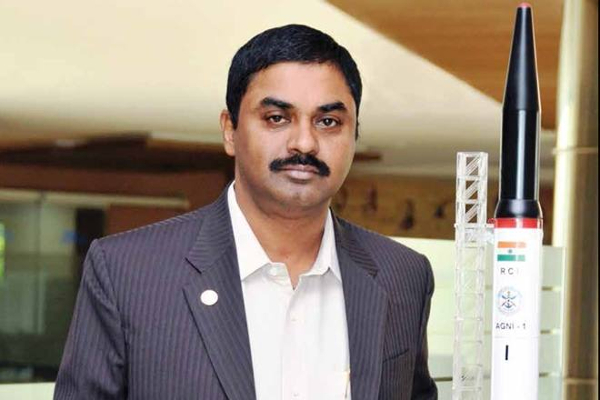NEW DELHI: The Chairman of the Defence and Research Organisation (DRDO) that developed the A-SAT or anti-satellite missile which was tested successfully on Tuesday, rejected speculative reports that the A-SAT was a derivative of the Prithvi ballistic missile family.
In an exclusive interview to ANI, DRDO Chairman G Satheesh Reddy said that this was a new missile developed specifically as an anti-satellite weapon. “The missile has technologies developed for ballistic missile defence applications, particularly the kill vehicle,” said Reddy. He added that in addition to this, rocket motors developed in missile complexes, were all integrated to make a new A-SAT missile.
The A-SAT missile was launched at approximately 11:16 AM on Tuesday from Odisha’s Balasore and within three minutes of launch, it successfully hit the intended target, a de-commissioned Indian satellite, in a ‘Low-Earth Orbit’ at roughly 300 km from the Earth’s surface.
When asked the reason behind choosing a 300 km-altitude range for the target, Reddy said that protecting nearby space assets had to be considered. “As a responsible nation, we wanted to be sure all space assets were safe and all the debris decayed fast,” added Reddy.
However, the A-SAT missile had capabilities of targeting all ‘Low-Earth Orbit’ satellites. “It has a range of upto a 1000 Kilometres plus,” revealed Reddy to ANI.
After the successful completion of the missile test, Prime Minister Narenda Modi made a televised address on Tuesday. “Some time ago, our scientists shot down a live satellite 300 kilometres away in space, in Low-Earth Orbit…It was conducted under Mission Shakti, which was completed in three minutes,” PM Modi said in his 10-minute address.
India’s Ministry of External Affairs followed up on PM Modi’s address by releasing a detailed note informing the world that India’s actions were only to augment its deterrence capabilities and did not intend to trigger an arms race in space.
The Chinese Foreign Ministry released a statement responding to India’s A-SAT test which read, “We have noticed reports and hope that each country will uphold peace and tranquillity in outer space.”
With the success of “Mission Shakti”, India has now entered an elite club of three nations – United States, Russia and China, with similar missile technology. This sort of missile application enables a country to attack and disrupt enemy satellites, thereby affecting communication networks. India’s A-SAT missile was an indigenous build.
“The NSA (Ajit Doval) whom we report to on strategic matters gave the direction to go ahead with the test and he had the concurrence from the Prime Minister. The development started a few years back and we went into mission mode in the last 6 months,” said the DRDO Chairman in an exclusive interview to ANI. He added that 100 scientists worked round-the-clock to meet their intended date of launch.
Source:ET
Image Courtesy: Millennium Post
You may also like
-
IAF Aircraft Set Course For Exercise Eastern Bridge VII At Oman
-
IAF Set To Host The Indian Defence Aviation Exposition-II At Jodhpur
-
Defence Secretary to co-chair 5th India-Philippines Joint Defence Cooperation Committee meeting in Manila
-
Simultaneous Launch Of ‘malpe And Mulki’, Fourth And Fifth Ships Of Asw Swc (Csl) Project
-
Aatmanirbharta in Defence: MoD signs Contract with HAL for 240 AL-31FP Aero Engines for Su-30MKI Aircraft
